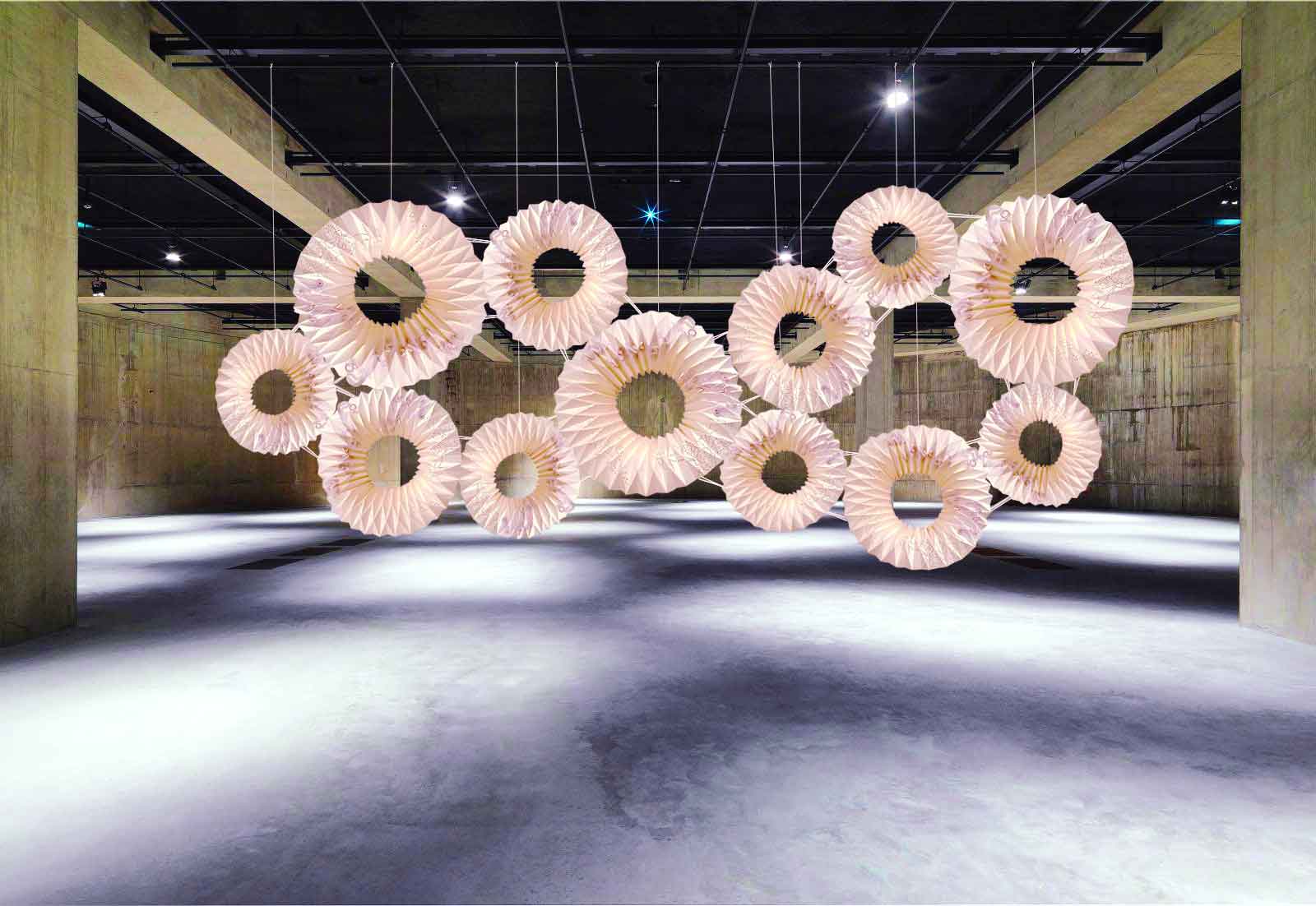Origami maestro Ankon Mitra’s installation, The Wheels That Spin Infinity, is an ode to Gandhi’s charkha and reminds one of how he used the instrument as a tool for the country’s freedom struggle. By Uma Nair
The possibility of creation from paper is infinite, said Japanese origamist Akira Yoshizawa. Landscape architect and origami maestro Ankon Mitra turned his words into reality through his installation of khadi, The Wheels That Spin Infinity.
He sourced the two tonnes of khadi fabric from Khadi Gramodyog in Rajiv Chowk to create his magnum opus that presents a contemporary take on Mahatma Gandhi’s charkha (spinning wheel).
“This is an installation made of 17 handcrafted Khadi-clad toroidal forms. The work references our simple heirloom charkhas, the glorious past of our freedom struggle embodied within the simplest of handcrafted machines. It also exemplifies the present and vaults that onto an even more glorious future — one where the Indian civilisation works with renewed vigour on the monumental achievements of our past like the discovery of zero. It goes on to understand, interpret and harness its mathematical counterpart — the principle of infinity — represented through a network of interlocked spinning wheels,” said Ankon.
If one looks carefully, the network of the toroids reveals a hidden symbol of infinity within. According to Ankon, Gandhi bequeathed to us many things — Satyagraha, a personal quest for truth and freedom — was one of those treasures. The 17 toroids in this work represent the 17 fasts that Gandhi undertook during India’s freedom struggle. His longest fasts lasted for 21 days. There are 210 folds in the larger toroidal forms to commemorate this number. Gandhi deployed fasting as part of his philosophy of Ahimsa (non-violence) and Satyagraha.
Ankon adds an elegiac eulogy to his installation as he adds, “Fasting is an ancient Indian technique of renunciation, cleansing and self-analysis and Gandhian use of it for larger political ends was extremely unique and novel. Today, each one of us must engage in our own Satyagraha, choosing lives of innovation, frugality, wisdom and the zeal to take our nation to newer heights of freedom and awakening.”
The spinning wheel was the physical embodiment and symbol of Gandhi’s constructive programme. It represents Swadeshi, self-sufficiency, and at the same time, inter-dependence, because the wheel is at the centre of a network of cotton-growers, carders, weavers, distributors, and users. It also embodied the dignity of labour, equality, unity, as all volunteers were to spin each day. And finally, independence as British control of India was rooted in the control of indigenous industries such as textiles. For art lovers, Ankon’s Wheels that Spin Infinity will bring forward history in a tangible tensile way.
(The exhibition starts from October 2 to 22 at Lalit Kala Akademi.)


























